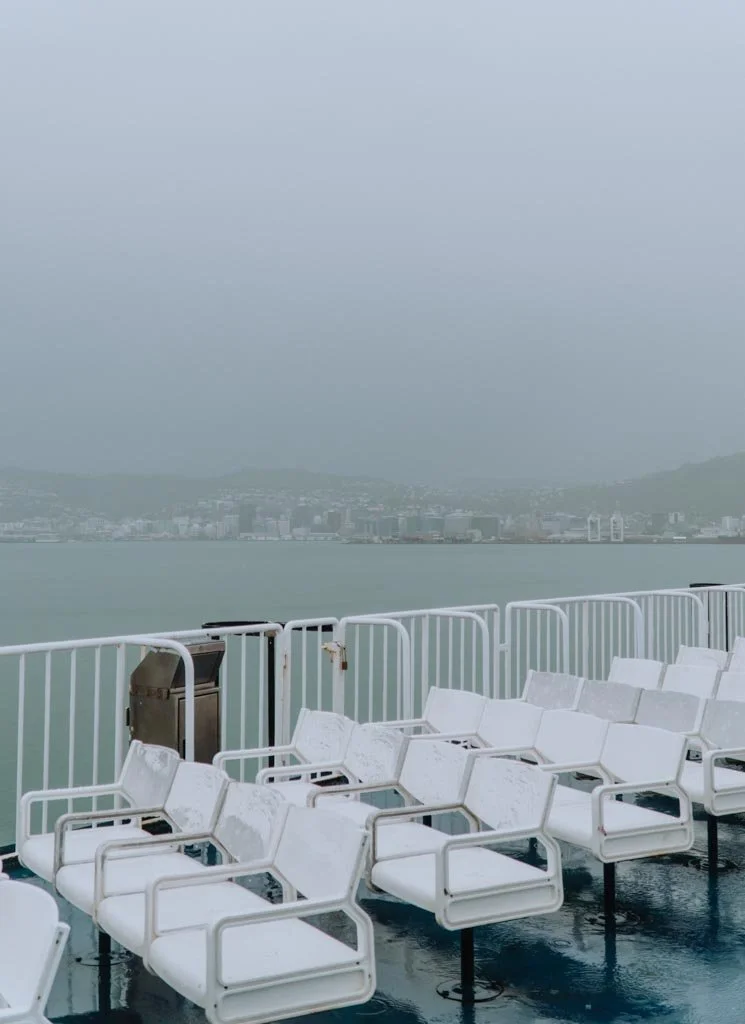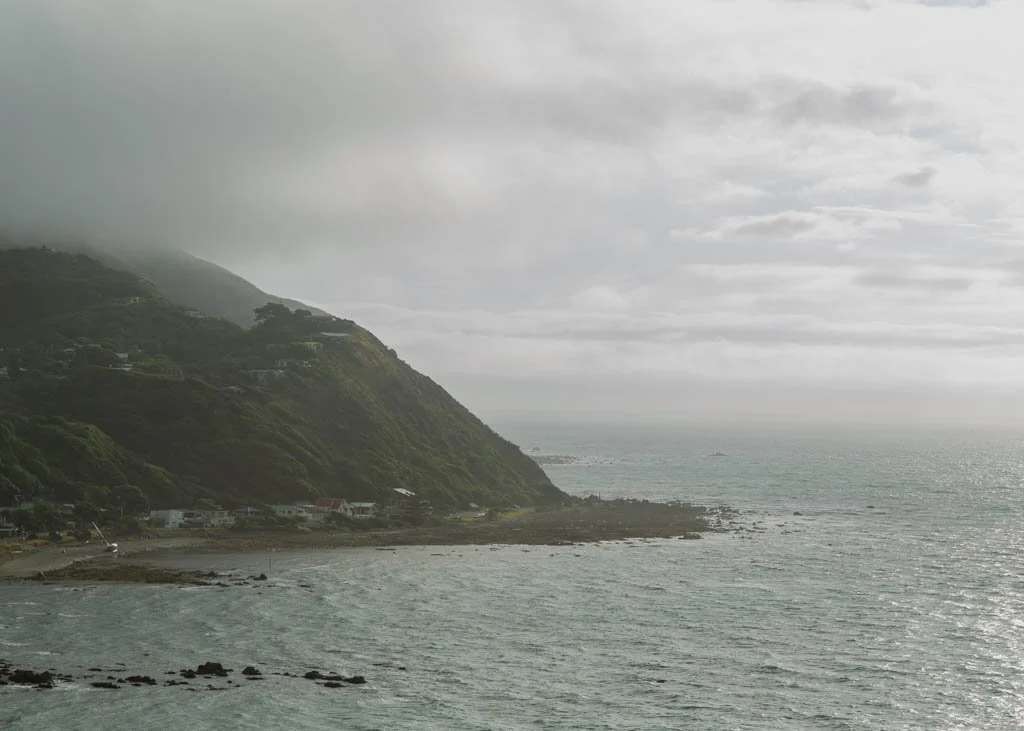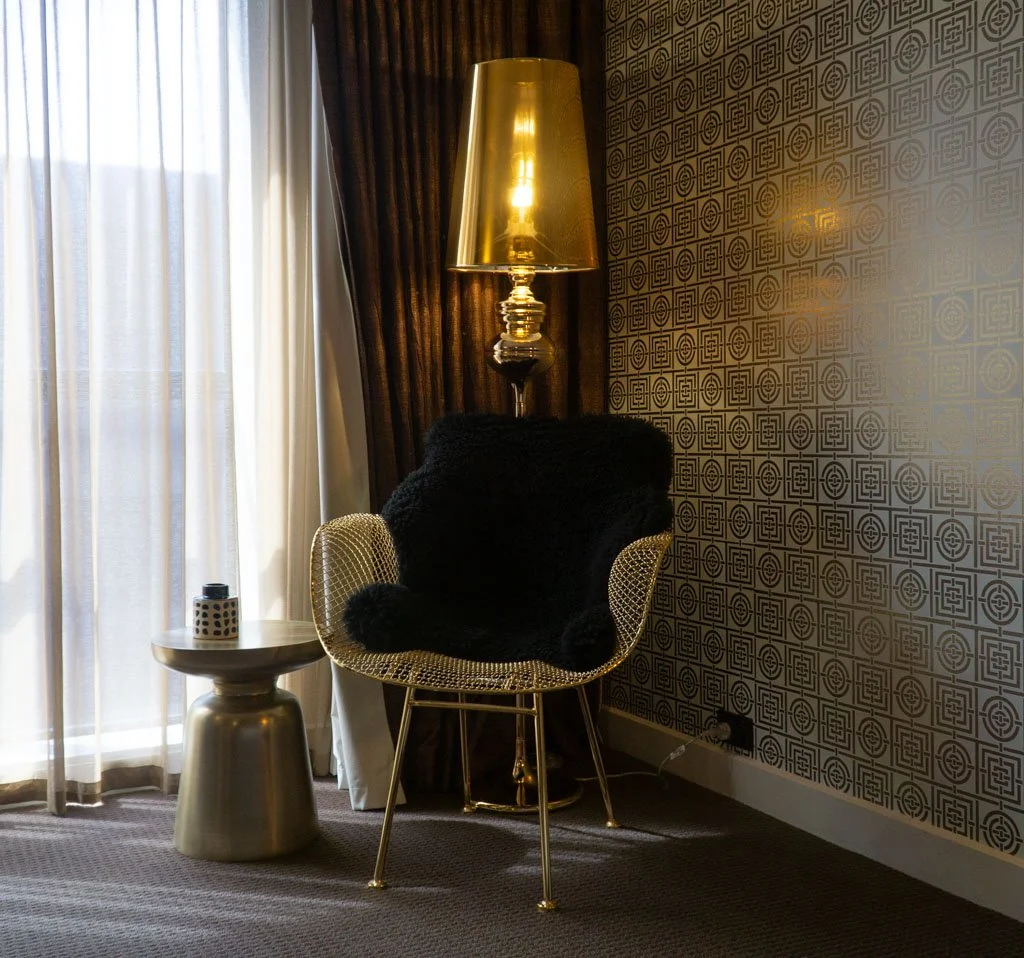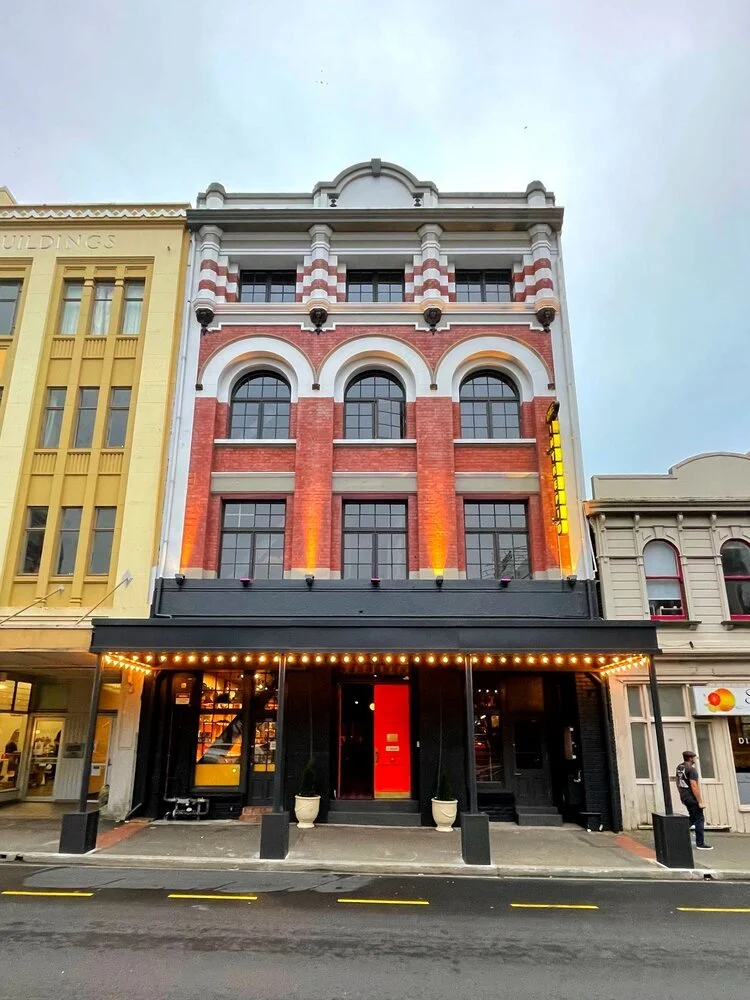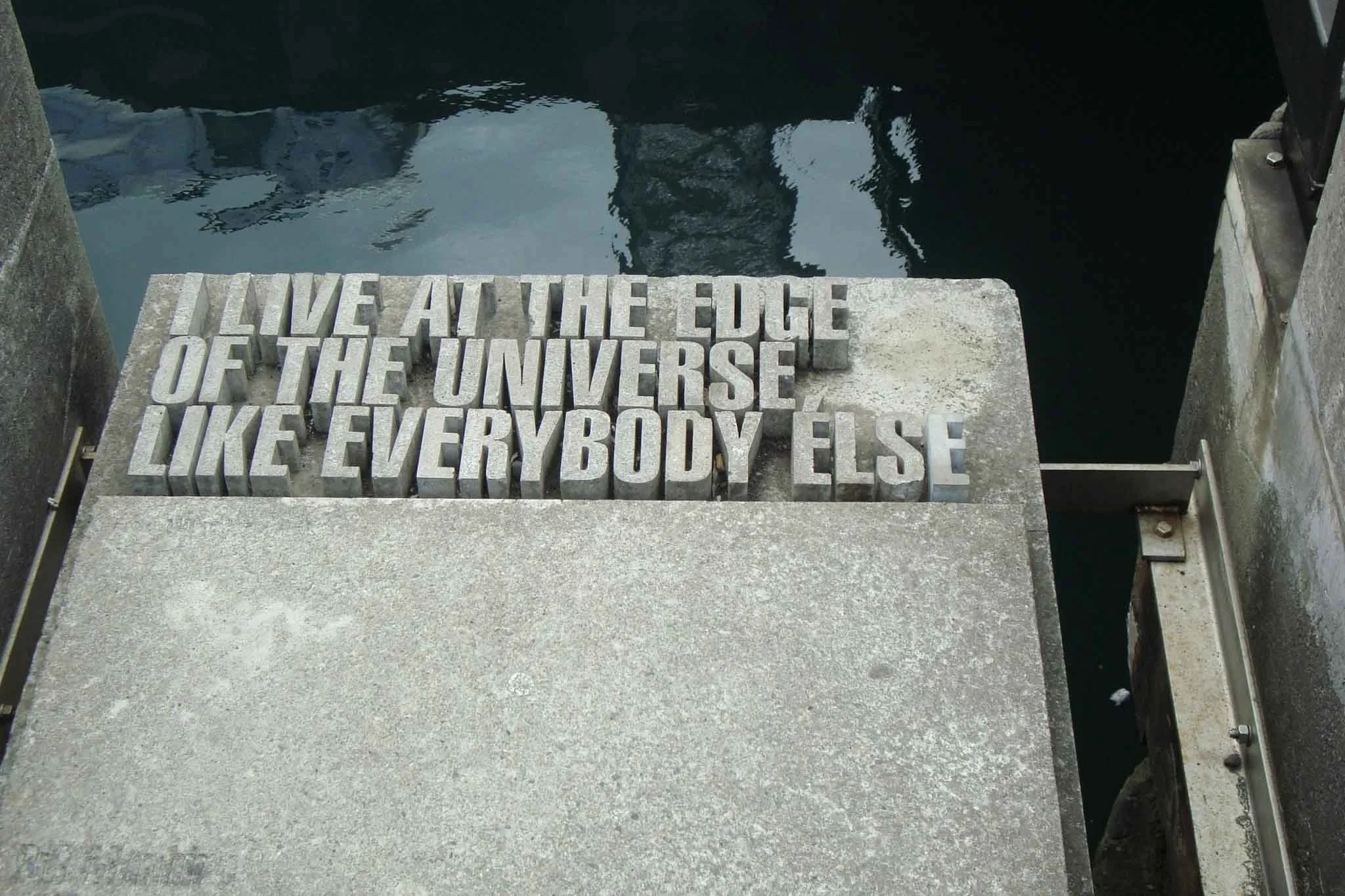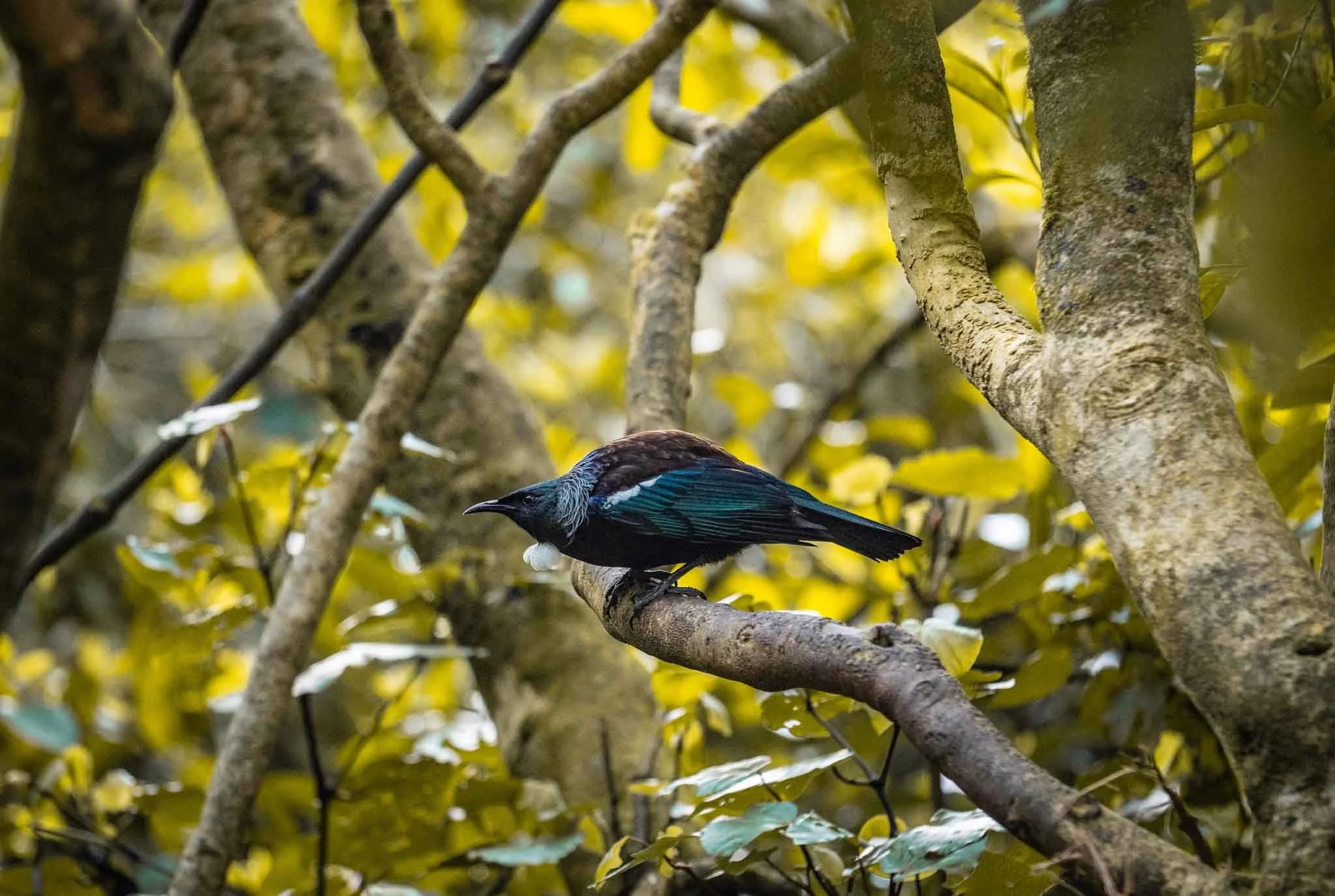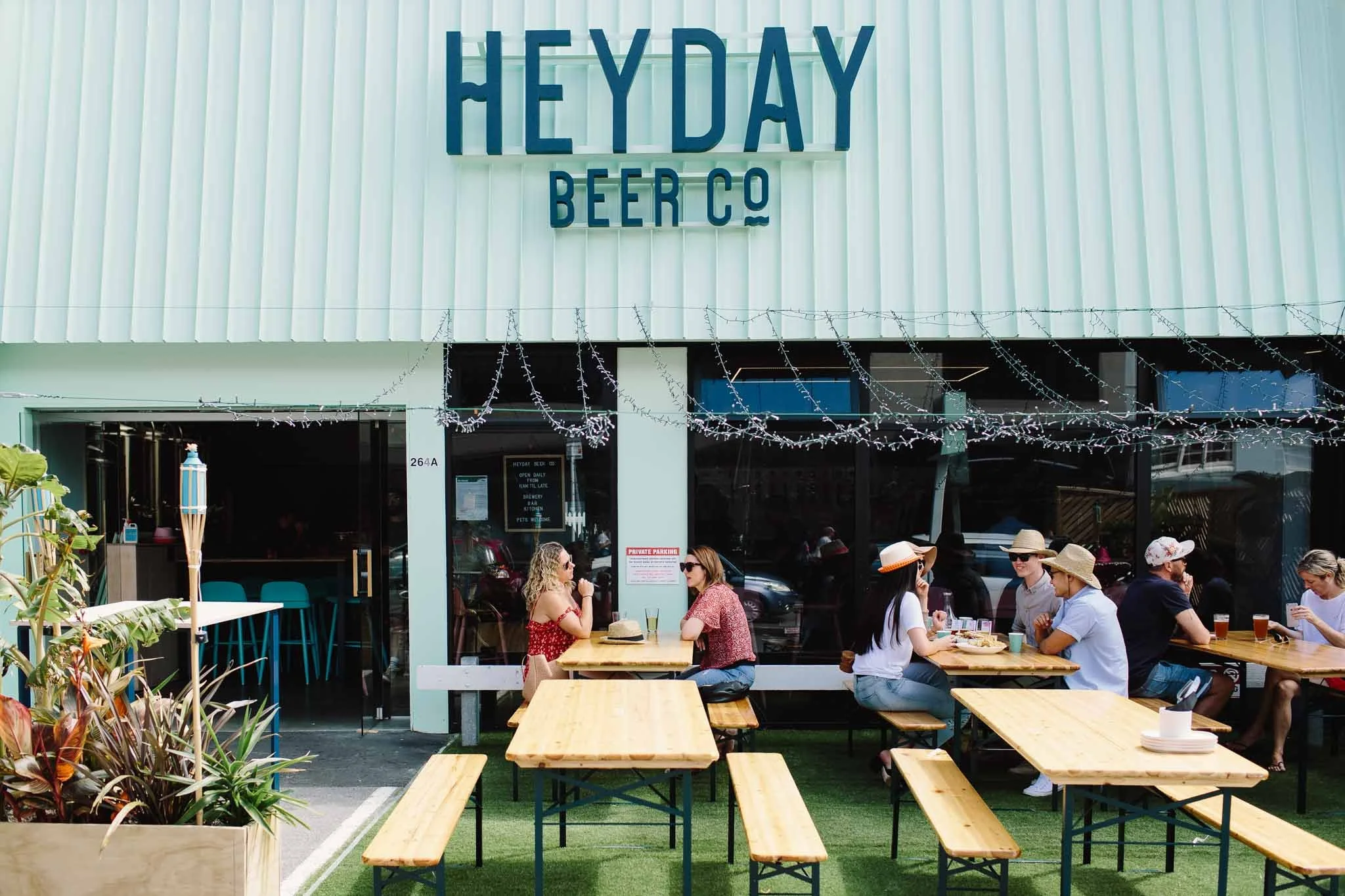15 cool & unique things to do in Wellington
I wouldn’t say that Wellington is a place you absolutely must see, but if you’re taking the ferry from one island to the other, it’s a good place to stop for a night. Get to know New Zealand’s cool little capital with these must-do activities.
Wellington, in all her moody glory — this is the view from on top of Mt Victoria
Disclosure: This article contains affiliate links, which means I may earn a commission if you book through those links (at no extra cost to you!). Thanks for your support.
My first memories of Wellington are from visiting my sister when she studied there.
I would take the overnight bus from Hamilton (the cheapest option, usually costing less than $20) where I was a student, and spending a few nights in her cold, damp student flat.
I remember marvelling at her wardrobe of ‘proper’ coats that she needed to guard against the Wellington weather, and the fact that she couldn’t wear floaty dresses because the wind would constantly blow them up, Marilyn style.
The Wellington harbour, as seen from the Interislander ferry on a very rainy March day
I remember eating hot, delicious bowls of roti chanai at a little Malaysian place off Cuba Street, and getting drunk and dancing at rowdy bars along Courtenay Place.
Wellington always had the feel of somewhere exotic for me, somewhere exciting.
Later, when I started visiting for work and spending time in an office where my corner desk overlooked the harbour from 20 floors up, and when I had a company credit card that covered my stays in nice hotels and meals in nice restaurants, it still kept that feeling.
The rugged Wellington coastline, seen from the Northern Explorer train as we travelled along the coast into the city
Except for the fact that central city parking is a nightmare, I love visiting Wellington.
Wellington locals have a smug saying — “you can’t beat Wellington on a good day.”
They have a point; the city is stunning in the sunshine.
But, the joke is, there are few good days in Wellington. New Zealand’s capital city is famously windy and often wet.
Luckily, a lot of the best things to do in Wellington are indoors.
The small but mighty city is famous for a vibrant arts and cultural scene, housing the nation’s government in a building adorably called ‘the Beehive’, and having an impressive number of cafes and craft beer breweries.
Compressed between the mountains and sea, Wellington is easily explored on foot and strolling the eclectic and lively streets is all part of the fun.
Wellington's magic isn’t just confined to the urban centre, though. The rugged coastline, bush covered hills, and nearby islands provide ample outdoor adventures — if you don’t mind throwing on a jacket.
Sometimes, if you’re lucky, nature even comes to the city — orcas are known to pop into the harbour, and kākā (native parrots) flit through the city’s trees.
Wellington at a glance
HOW MUCH TIME DO YOU NEED IN WELLINGTON: One night is usually enough to explore some of the best things to do in Wellington.
If you only have one day in Wellington, get brunch and coffee from one of the city’s famous cafes in the morning, go for a stroll around the waterfront, stop by Te Papa museum and then head down Cuba Street.
After an afternoon of browsing book shops and record stores, you can have dinner at one of the great restaurants in the city, and round out your day with a cocktail or glass of local wine in a speakeasy bar like Puffin.
THE HIGHLIGHTS:
Start your day with coffee and a cheese scone
Walk the waterfront and visit Te Papa
WELLINGTON ITINERARIES:
WHERE TO STAY:
Stay in Te Aro, which is roughly the city centre and encompasses Cuba Street and Te Papa.
FEATURED STAY
QT Wellington
I used to stay here when I went down to Wellington for work — I always loved the lavish rooms with colourful decorations and full bathtubs in the bathrooms.
FEATURED STAY
The Intrepid
Boutique and independently owned, this former chocolate factory is renovated in a way that embraces its industrial past.
Start with coffee
When visiting Wellington, start your day like Wellingtonians do — with caffeine. Coffee culture is strong in the capital city, and locals take their morning brew seriously.
I’m no coffee connoisseur, but I love stopping by Havana Coffee Works, a colourful, retro roastery in an avocado-green art deco building. First opened in 1989, Havana leans into the Cuban theme.
The cosy little cafe has an eclectic, old-world style. While there, you can wander upstairs to look about the building, to see the beans being roasted in real time.
Learn about history at Te Papa
One of Wellington’s star attractions is the Museum of New Zealand Te Papa Tongarewa, which has pride of place on the waterfront.
New Zealand’s national museum houses exhibits on Māori and Pacific history. Te Papa is an essential stop for learning about the heritage of Māori people, as well as the Moriori people who inhabit the Chatham Islands.
There are also stunning collections of artworks like the exhibit from the Mataaho Collective, four Māori women who have been working together for the past decade.
The cavernous interior is a welcome refuge on days of inclement weather.
For lunch, eat a roti canai on Cuba Street
Hunter’s and Collectors on Cuba Street — photo credit WellingtonNZ
You can’t visit Wellington without going for a stroll down Cuba Street, the bohemian heart of Wellington.
On this eclectic strip, you can browse vintage shops like Ziggurat, and Hunters and Collectors, or look for new vinyl at independent record stores.
Don’t forget to look out for the clanking bucket fountain, an icon of the city.
Cuba Street is also one of the great dining streets of Wellington city. This is where you’ll find local favourites like Scopa Pizzeria, Kisa, and Olive.
Learn about New Zealand history at Te Papa
Explore Wellington’s literary history, and go book shop hopping
One of my favourite things to do in Wellington is stroll around the waterfront, where you’ll see quotes from notable New Zealand writers, as typographical sculptures. The Writers Walk is beautifully done, with the words paying tribute to the city and sea.
“I love this city, the hills, the harbour, the
wind that blasts through it. I love the life and pulse and activity, and the warm decrepitude ... there’s always an edge here that one must walk which is sharp and precarious, requiring vigilance.”
If you feel inspired to pick up new reading material after your waterside walk, head to independent book store Unity Books, or visit Ferret Bookshop for quality second-hand books.
Pegasus Books, an independent bookstore on Cuba Street — photo credit WellingtonNZ
“I saw the Maori Jesus
walking on Wellington Harbour.
He wore blue dungarees.
His beard and hair were long.
His breath smelt of mussels and paraoa.
When he smiled it looked like the dawn.”
Check out some of Wellington’s live music scene at San Fran
Wellington has a thriving live music scene, and one of the most popular venues where you can get amongst it is San Fran. From up-and-coming local artists to the big name internationals, this is a Wellington music instituion..
San Fran do a free gig every Wednesday night called Eyegum with local up and coming musicians. The genre is leans toward indie pop but it's a different lineup every week, so it’s a cool way to check out the scene on a budget.
Some other awesome music venues in Wellington:
Pyramid Club, for experimental music
Moon in Newtown
Jack Hacketts for Blues on Friday and Saturday nights
An awesome local tip: Follow theimage04 on Instagram for a brilliant Wellington gig guide. They post weekly with a schedule of what's happening/gigs at all the main venues in town and any other events happening elsewhere (that they know of)
Take a day trip to Martinborough, a wine village near Wellington
Poppies vineyard
Wine tasting at Poppies
Martinborough is the North Island’s cutest little wine village.
It takes around 1 hour 20 minutes to drive from Wellington to Martinborough. On the way, I usually stop in Featherston for a cheese scone at C’est Cheese.
Martinborough is a sweet little village. Around 20 vineyards are clustered around Martinborough village centre, so you can walk or cycle to a whole range of vineyards.
My favourite spot to visit in Martinborough is Poppies winery — a local favourite thanks to its platter lunches and stellar white wines. You can stroll in for a tasting anytime, but you should book ahead to get a lunch spot.
I loved how laid back the tasting was at Poppies. It felt friendly and down-to-earth, while the wines were fabulous (my favourite was the dry Pinot Noir Rose).
If you’re up for turning this day into a longer day trip, carry on down to the rugged coastline along the very bottom edge of the North Island.
Make a pit stop for coffee and cake at The Land Girl cafe in blink-and-you-missed-it Pirinoa. It’s the perfect amount of quirky, with upcycled outdoor seating where you can enjoy country views, and even some vintage clothing treasures to browse.
The Putangirua Pinnacles are a key stop along the coast. These unique rock formations have an eerie appearance like fairy chimneys. You can walk through the pinnacles up a rocky streambed, or up to a ridgeline for views of the rock formations amidst the forest.
The road to Cape Palliser follows the pebbled coast around the southern Wairarapa.
It’s dotted with one-way bridges, slowing you down in preparation for the pace of life in Ngawi, a quirky fishing village wedged between a cliff and gravelly beach.
Bulldozers tinted orange from salt spray sit in a haphazard line along the water’s edge, their rusted hulks waiting to drag homecoming fishing boats from the ocean.
Rogue sheep trot across the road, unbothered by passing cars.
Continuing past Ngawi, you’ll feel as if you’re reaching the end of the world. In some ways you are; this is the southernmost point of the North Island.
The road becomes narrow and potholed, dipping in and out of fords and clinging to the rocky cliff in places.
On the way to the lighthouse is the largest fur seal colony in the North Island.
The seals are everywhere, hopping between bushes and lugging themselves over rocks, wafting pungent smells as they go. They are often sprawled right by the parking area, so take care and make sure you keep at least a 20-metre distance.
The Cape Palliser lighthouse is the last stop on the road. Boldly candy striped in red and white, it has stood at its fantastic vantage point since 1897.
Climb the 253 steep steps to enjoy views of the harakeke-covered hills and surf surging onto shingle beaches below.
See Wellington’s creative side at a perfumerie in Aro Valley
Aro Valley is an inner-city suburb home to some of Wellington’s coolest creatives.
Among the brewers, bakers, and makers is Abel Odor, a natural perfumery that is part factory and part shop.
Abel was founded by New Zealander Frances Shoemack, as a result of her quest for a natural perfume that is sustainable and ethical. The perfumery’s mission is to create the world’s best natural perfume without compromising on ethics or aesthetics.
At the flagship store in Te Aro, you can enjoy the gorgeous aesthetics of bespoke furniture and the functional stainless steel of the working factory (or ‘fabriek’ as they call it.
Here, you’re invited to be guided through the fragrance experience. You can go behind the scenes of a functioning, hyper-modern perfumery, and maybe walk out with a delightfully scented souvenir.
Visit the National Library to see New Zealand’s founding documents
One of the best things to do in Wellington is completely free.
Visit the National Library Te Puna Mātauranga o Aotearoa, opposite the New Zealand Parliament buildings, to see the New Zealand's founding documents. He Tohu is a permanent exhibition of three constitutional documents that shape Aotearoa;
He Whakaputanga o te Rangatiratanga o Nu Tireni — Declaration of Independence of the United Tribes of New Zealand (1835). Created by Maori leaders/rangatira in 1835 to show the world that New Zealand was an independent Māori nation.
Te Tiriti o Waitangi – Treaty of Waitangi (1840). The founding agreement between Māori and the Crown. It is displayed facing toward the doors of parliament across the road, to constantly challenge the government and hold them accountable.
Women’s Suffrage Petition – Te Petihana Whakamana Pōti Wahine (1893). New Zealand was the first country in the world to give women the vote, and at He Tohu you can see the 1893 Women’s Suffrage Petition, Te Petihana Whakamana Pōti Wahine.
The hand-crafted room where these documents are kept is inspired by traditional Māori waka huia, or canoes. It's lined with wood and has a curved ceiling.
The interactive exhibits give context to these important documents and insight into New Zealand's history.
Get the best views of Wellington from up Mount Victoria
The Mount Victoria Lookout in Wellington is a must-do.
The view from the top of the mount (more of a hill, known to Wellingtonians as simply Mt Vic) is glorious. From here, you can appreciate the splendour of Wellington’s harbour location, with bush clad hills rising around the city and sweeping sea views.
It’s also a top spot for a picnic.
Before walking up the hill, swing by the famous chef wholesaler and gourmet goods paradise Moore Wilson’s on Lorne Street — it’s a classic Wellington grocery store, so you will truly be living like a local if you do this.
In true Wellington style, here you’ll find everything you need for a decadent picnic, including cheeses, meats, and baked sweet treats.
The Mount Victoria Lookout is about a 30 minute walk from the centre of the city.
Mount Victoria is also famous for its cameo appearance in the Lord of the Rings trilogy as Hobbiton Woods. If you’re a LOTR fan, you can follow the Hobbit path to find the spot where Frodo and the other hobbits hid from the ring wraith.
Spot seals in the Red Rocks reserve
The coastal walk by Red Rocks reserve is gorgeous — a wild, rocky, windswept stretch of coastline, where you’ll be walking by the water.
Red Rocks Reserve is located in the Owhiro Bay area, about a 30-minute drive from Wellington's city centre.
The trail takes you past distinctive red and orange-hued rocks, which were formed from ancient volcanic activity.
Seals laze on the rocks, quite unbothered by the people walking by.
On clear days, you can even see as far as the South Island.
The walk is approximately 2.5 to 3 hours return, depending on how far you choose to go. It's around 6.5 km (4 miles) from the Owhiro Bay car park to Sinclair Head and back.
If you happen to be visiting Wellington in a campervan, Red Rocks Reserve is also a fabulous freedom camping spot. It feels like you’re miles away from the city, but it’s only a 15 minute drive.
Take the iconic Cable Car up to the Botanic Gardens
One of the most fun things to do in Wellington is to catch the fire engine red Cable Car that has been trundling up and down the Kelburn hillside since 1902.
You can catch the cable car from Lambton Quay, the main shopping street running parallel to the waterfront ($6 one way).
The cable car climbs around 120 meters in a short five minutes, saving you a hike up the hillside. Disembark at the Kelburn terminal; from here, you can walk through the Botanic Gardens.
Wellington Botanic Garden is situated on the hills above the city center, encompassing 25 hectares (62 acres) of landscaped gardens, forests, and natural bush.
From their location on the hill, you can enjoy views across the city to the harbour beyond.
For an even better view, head to the Te Ahumairangi Hill Lookout — about a one hour walk from the Cable Car Kelburn terminal through the gardens. as your final destination.
From the lookout, you’ll be rewarded with a stunning view of the city.
Visit Zealandia to see a vision of New Zealand without people
Zealandia is a fenced wildlife sanctuary with a 500 year plan to restore the valley where it’s located, wedged into a hillside not far from central Wellington, to a pre-human state.
Visit Zealandia during the day for a chance to spot rare birds like tieke/saddlebacks, takahē and kākā, or at night for a chance to see nocturnal kiwi.
There’s a free shuttle to Zealandia from the Kelburn terminal of the Cable Car, so it’s easy to combine the two activities.
Visit Wellington’s craft beer brewpubs
I’m not really a beer drinker, but in the capital I make an exception for the craft beer brewpubs; it’s an essential activity in Wellington.
The city boasts the most craft beer breweries per capita in New Zealand, earning its reputation as the craft beer capital of the country. It's a haven for beer enthusiasts with its diverse range of breweries and bars.
The craft beer culture is strong in Wellington, and the city’s breweries encapsulate a lot of the grungy, creative charm of the capital.
On the funky Hannah’s Laneway, a block over from Cuba street, you’ll find Fortune Favours spread across two stories of an old industrial building.
Near the upper end of Cuba Street is Heyday, a pastel green brewpub in a former car battery shop. There are tables out the front, so on a fine day you can sit in the sunshine and enjoy cold brews.
Garage Project is another local favourite. Their brewery in Aro Valley features a rotating selection of unique and experimental beers,
The wood-panelled taproom has a laid-back vibe and on tap are around 20 beers. Try a tasting flight for the full experience.
Over in Lyall Bay, one of Wellington’s best beaches, is ParrotDog, another good spot.
Explore Wellington’s restaurants
One of my favourite food memories of Wellington is visiting my sister back when I was a student, and she took for roti canai at a hole in the wall place on Cuba Street. I remember sitting on the plastic chairs in the cold, dipping thick chunks of roti in a hearty, tangy curry, the perfect warming dish on a chilly day.
This is the kind of thing you can look forward to in Wellington; incredible food from all over the world. Often dished up in deliberately low-key settings, pretty much always good enough to knock your socks off.
You could try a Myanmar tea leaf salad at Mabel’s, silky Syrian walnut-and-red-pepper dip at Damascus, toast with avocado, labneh and hot pickled carrots at Customs Coffee, and Pacific delicacies like kina at Hiakai.
There are so many restaurants to explore in Wellington that eating out is an activity in itself, a tour of New Zealand’s cultural influences and exceptional produce.
Until recently, New Zealand cuisine was mostly associated with lamb shanks and potatoes, or greasy snacks like petrol station pies.
These things still have a place in our food traditions, but now diverse, creative chefs are redefining modern New Zealand cuisine — and Wellington is an excellent place to see this in action.
Thanks for reading this far! I hope you’re looking forward to exploring Wellington, our funky little capital city.
If you’ve enjoyed my recommendations, you might want to check these out as well before you go:

